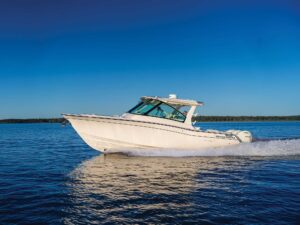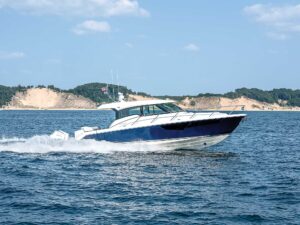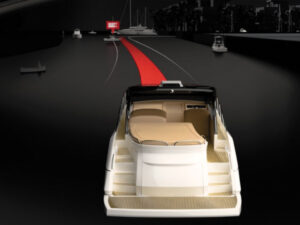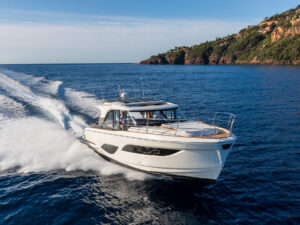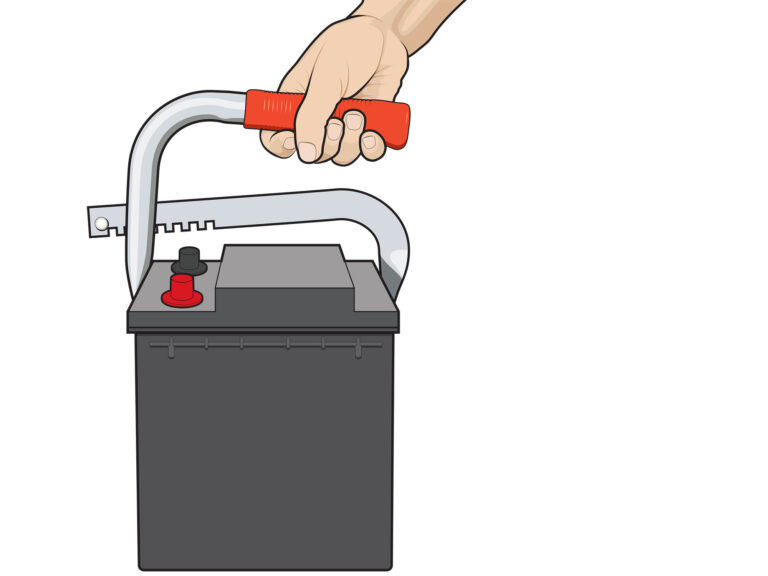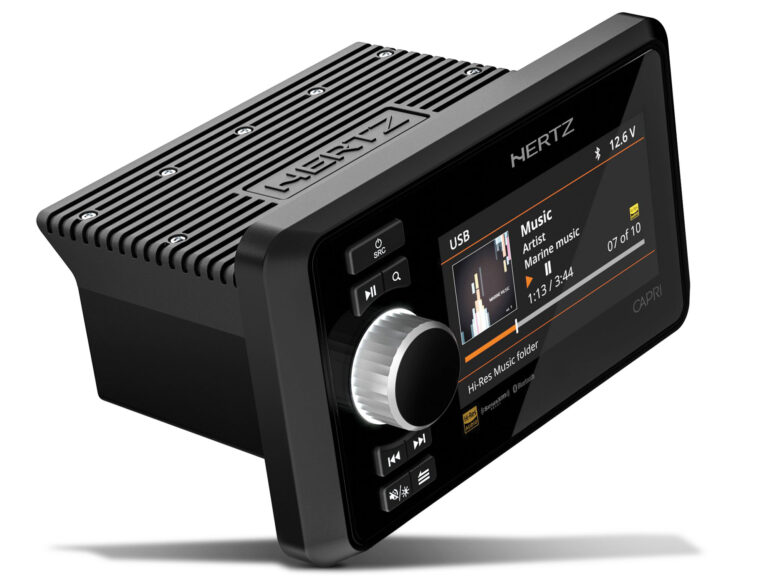FasTrac, SureTrac, Z-Trak, Z-Plane — the world of hull design is a hive of buzz phrases. But what they really mean could be a telltale sign of which used boat to buy, or not to buy.
Oooh, the clean sweeps and crisp lines of those boats. Such style! You’ll see a lot of that on these pages. But hull design is not just a matter of style. At least it shouldn’t be.
A boat hull has all sorts of shapes, bends, fins and grooves — things you can see most clearly when the boat’s on the trailer. Surely, you’ve wondered: Why the hull do boat makers do that?
Well, they do it because a deep-V hull is seaworthy but slow, and a flat-bottom is fast but flakey. Finding a blend of seaworthiness and speed has become a tantalizing challenge for some builders. Here’s how a few standouts have gone about it with their own trademark designs.
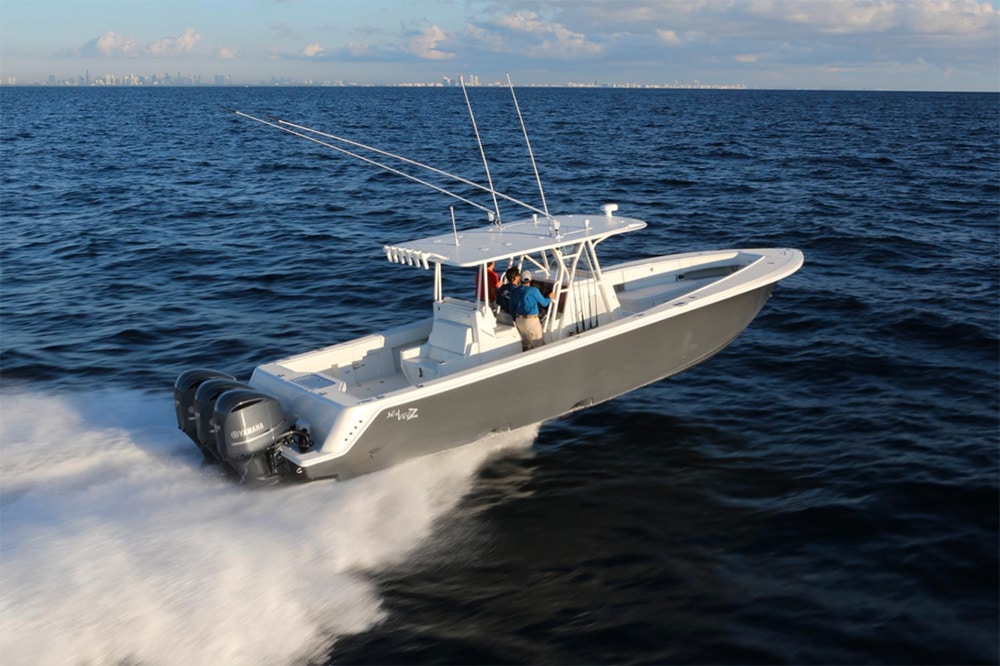
The Hull Truth: SeaVee Z
Case Study: SeaVee Z Series
SeaVee boats have long been heralded for their great-running conventional deep-V hulls. At the 2013 Fort Lauderdale Boat Show, the Miami boat builder introduced their new “Z” series line of stepped-hull boats.
I sea-trialed SeaVee’s 390-Z and then met with John Caballero of Sea Vee to get the “hull truth” behind these new double-stepped center console boats. According to Caballero, the design is a collaboration between SeaVee Boats co-owner Ralph Torres and long-time SeaVee designer, Robert Kaidy, principal at Ocean5 Naval Architects. It features a pair of small, 2-inch tall steps with large vents at the chines. This feature purportedly prevents the vents from clogging up and allows the more air to be fed to the hull, alleviating the “hitch” or “hesitation” –it’s an instantaneous loss of speed, really–that many stepped hulls exhibit due to clogged vents. During my trial of the 390-Z I can say that I did not experience this hesitation. I will also say that I have experienced it aboard other boats. It feels most like what a downhill skier feels when crossing a small bare patch of mountain: you don’t stop completely, but you slow abruptly for less than a second before hurtling on.
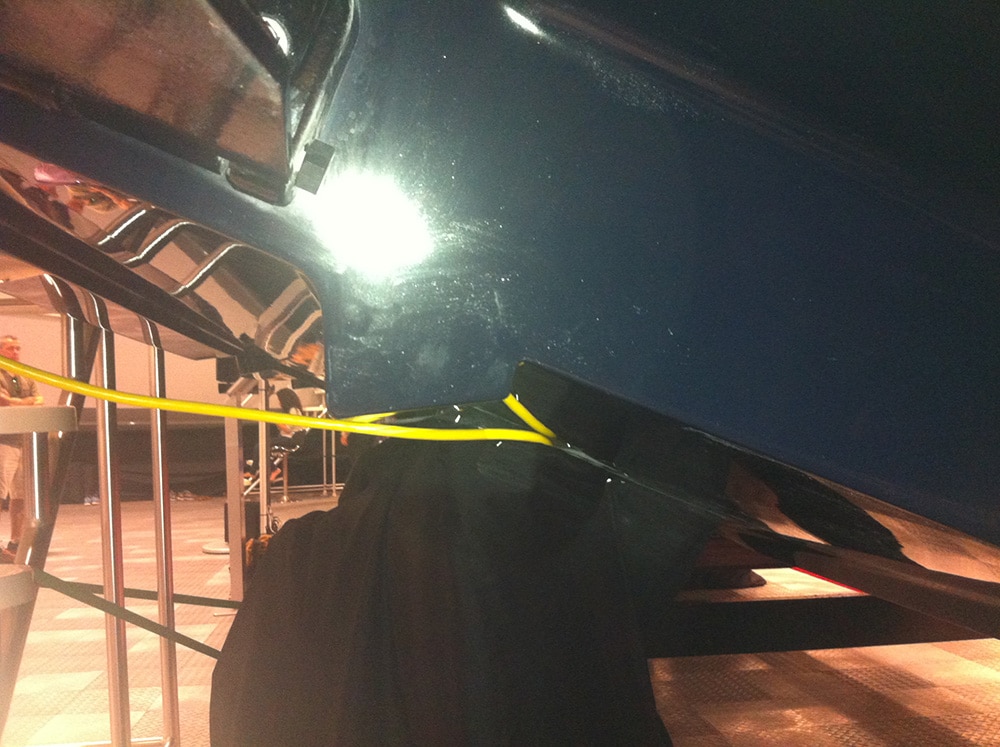
The Hull Truth: SeaVee Z
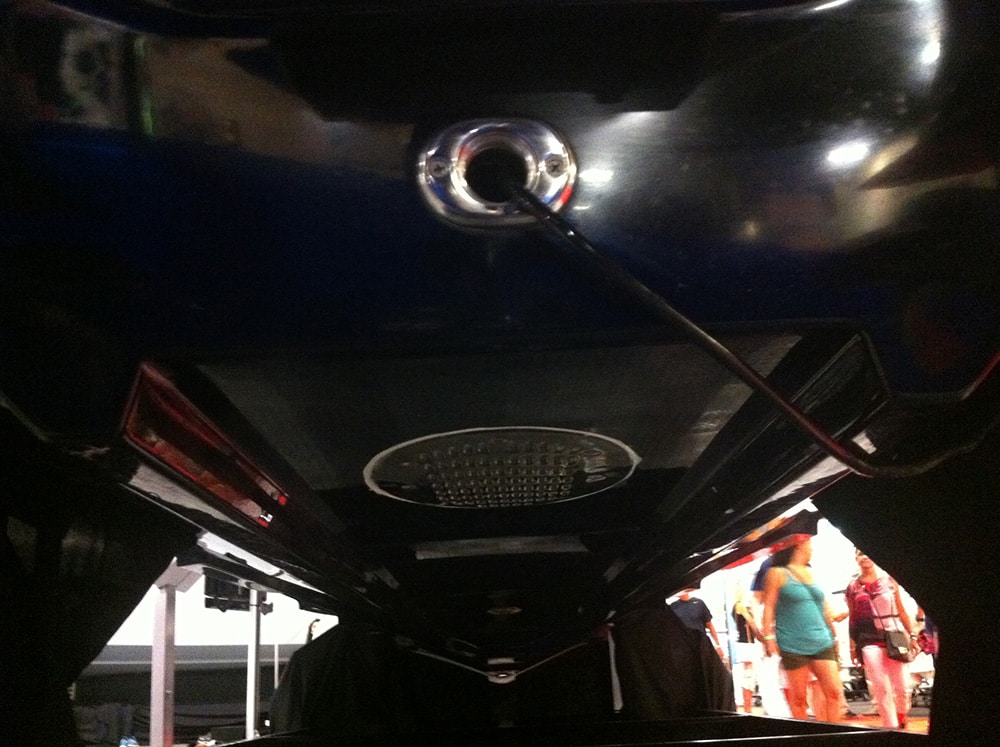
The Hull Truth: SeaVee Z
The second key feature incorporated into SeaVee’s Z series hulls are the so-called “speed rails.” These are the 90-degree inside corners molded into the chines and strakes, as seen in the above photo. These are on the aft hull panel only—that is, the part of the hull aft of the aft-most step.
Speed rails keep the boat tracking true, particularly in turns. Many stepped hull boats get “squirrely” when turning. But I was able to haul the SeaVee 390-Z through some high-speed, hardover turns with as much confidence as I would when commanding a conventional V-hulled boat.
Finally, the Z series hulls feature a flat keel for most of the length of the underbody. This stays wet and allows installation of through-hulls to be successful, something always problematic aboard stepped-hull boats. But more importantly, the flat keel section provides more lift, easing the transition onto plane. Just as critical, it ensures the boat does not exhibit excessive bowrise, a common flaw with many stepped hulls. Since boating measures bowrise as part of our certified boat tests, I can say that the SeaVee 390-Z does not exhibit excessive inclination (bowrise); the most I measured was 3-degrees.

The Hull Truth: Regal FasTrac
Case Study: Regal’s FasTrac Hull
Regal was one of the first recreational boatbuilders to find a way to use a stepped hull to create speed without compromising stability. Go-fast boats have used steps (long notches that run from the outside of the hull to the keel) for decades. They’re used to ventilate the hull, which simply means the step allows part of the boat to ride on a layer of air bubbles, reducing friction. In the race boats, though, it can also cause herky-jerky movements.
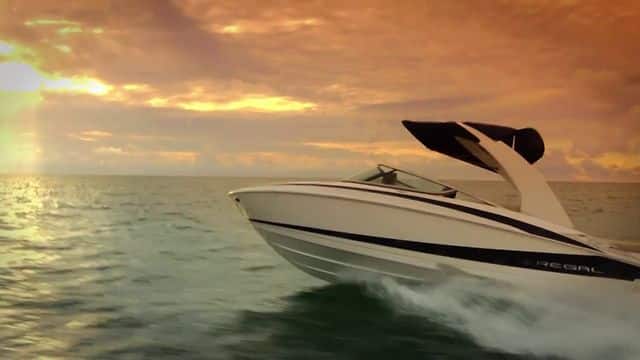
The Hull Truth: Regal FasTrac
Where the FasTrac differs is in its retention of a mild V-shape in the aft in turns while avoiding the “coming loose” feel of some stepped hulls. It’s been imitated, which is without a doubt the sincerest form of flattery in boatbuilding.
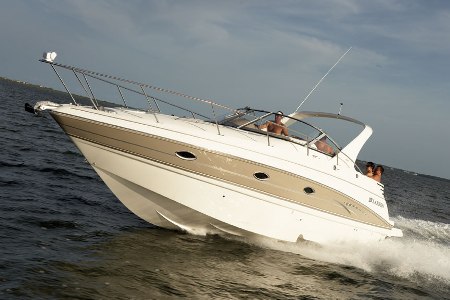
The Hull Truth: Larson Duo-Delta Conic Hull
Case Study: Larson’s Duo-Delta Conic Hull
Larson licenses Harry Schoell’s patent for this design, which it uses in its sport cruiser line. The running surface is stepped to create two sections of hull on the water at plane, one forward and one aft of the notch. Together they’re much smaller than the single contact area of a typical V-bottom. Less wetted surface means faster top speed.
This design also reaches that speed more quickly. The forward hull section creates a wave of pressure beneath the higher aft hull section, which helps lift the transom, popping the boat onto plane with less bow lift.
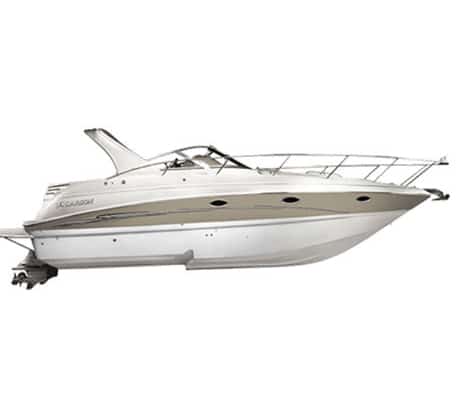
The Hull Truth: Larson Duo-Delta Conic Hull
“A traditional V-hull digs a hole in the water while you’re getting on plane,” says Jeff Kruscheck, Larson’s general manager. “With the stepped hull, what you have is almost a natural trim tab.” We’ve tested it, and the hull lives up to the hype.
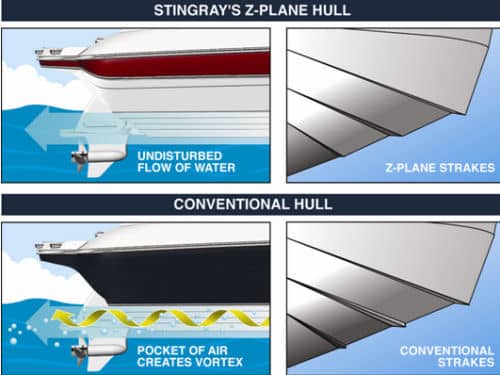
The Hull Truth: Stingray Z-Plane Hull
Case Study: Stingray’s Z-Plane Hull
Stingray president Al Fink once said his goal was “to make a boat as fast as it can be, but safe and easy enough for your grandmother to drive.”
Stingray, which introduced its CAD-designed and patented hull in 1989, knows plenty about the pluses and minuses of the V-bottom boats with lifting strakes. Typically, lifting strakes are roughly parallel to the water’s surface and the keel — until the boat turns, when they dig in and force the driver to slow down. They also create air bubbles in the water, reducing the propeller’s bite. Lowering the motor helps, but that creates drag. Speed is lost.
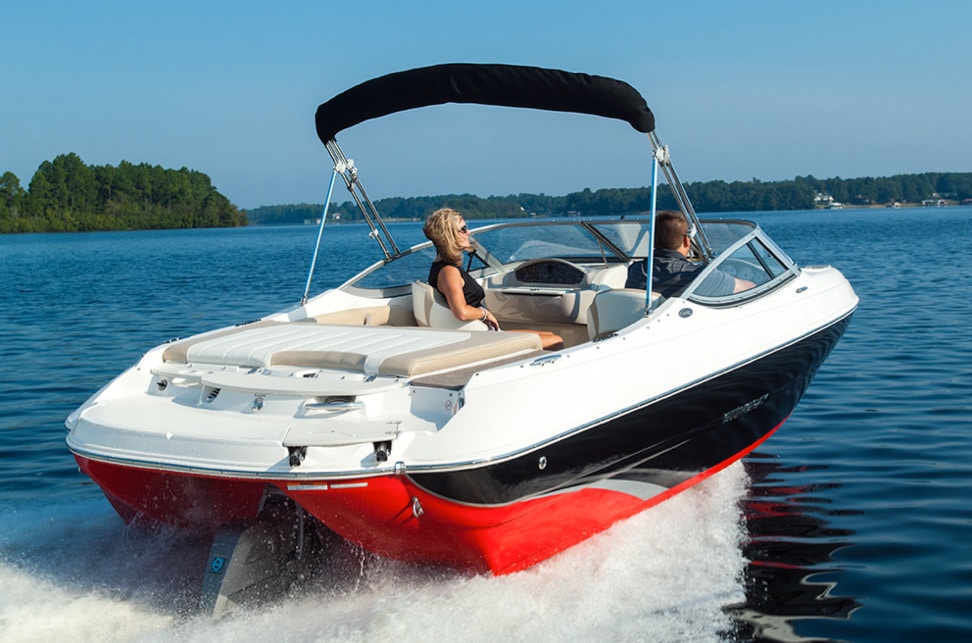
The Hull Truth: Stingray Z-Plane Hull
The Z-Plane Hull minimizes these problems by avoiding right-angled strakes. The hull’s running surface is actually three shapes nested, becoming steeper as they approach the chine. These running surfaces have strakes that vary from right angles by about five degrees.
The result? Less unwanted grab and ventilation in turns. The motor can be mounted higher, which reduces drag. Drive, Grandma.
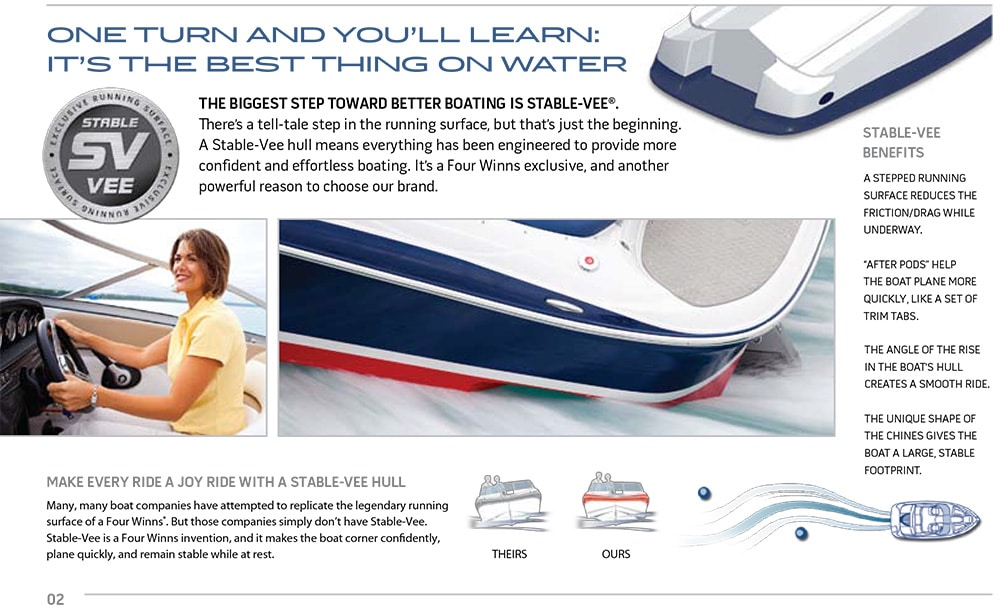
The Hull Truth: Four-Winns Stable-Vee
Case Study: Four Winns’ Stable-Vee and Split Chines
Four Winns engineers are quick to point out that the new SL262 is not a deck boat. It looks like it could be a cathedral hull, riding on three points of entry. But those exaggerated sponsons on the outside of the running surface are called split chines. Most runabouts have chines (those big lips deep in the hull upon which the boat lifts) just not… so big. Here’s the kicker: The SL262 doesn’t ride on them. They’re out of the water when the boat’s on plane. Four Winns added them strictly to widen the interior space farther forward.
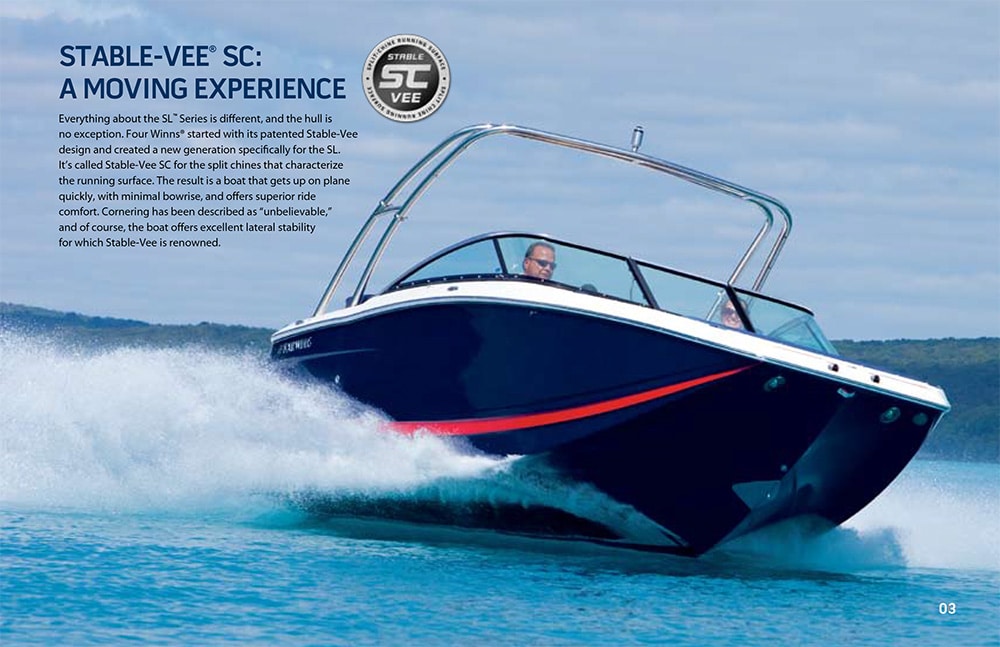
The Hull Truth: Four-Winns Stable-Vee
The actual running surface is the award-winning Stable-Vee hull that Four Winns introduced 15 years ago, and which many others have tried to mimic. This design pushes the running surface farther aft, so the outdrive is tucked into a pod. The deadrise, or angle of the V-bottom, changes degrees farther back. The purpose is to keep the boat from banking in turns. It handles more like a sports car — with all four wheels firmly on the pavement.
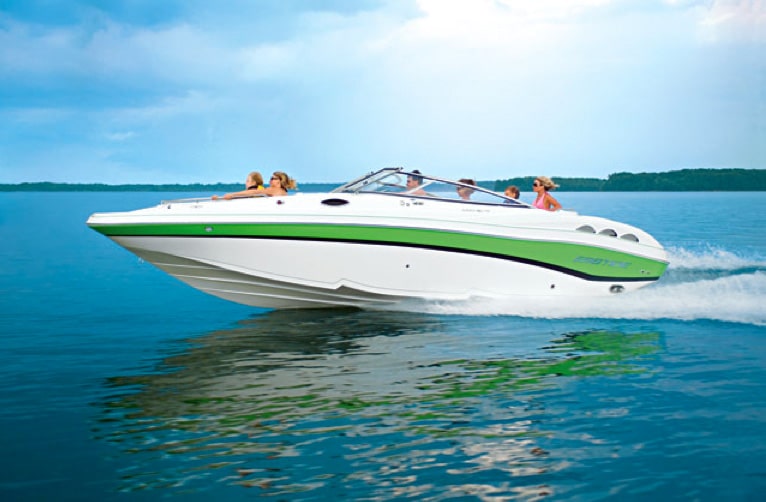
The Hull Truth: Ebbtide Z-Trak Hull
Case Study: Ebbtide Z-Trak Hull
Ebbtide president Tommy Trabue loves speedy boats. But as he explains on the company’s website, “Performance is about more than just going fast. It’s about stability, handling and feel in rough water, how your boat corners and holds in tight turns”.
To get those attributes, plus quick time to plane, Ebbtide builds its Z-Trak hull with unique double-vented chines that send air under the running surface, reducing speed-robbing drag at two points (and producing the distinctive Z-shape seen from the side as the boat whizzes past.)
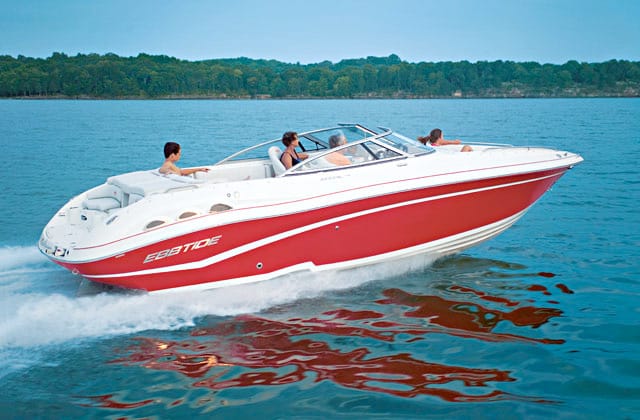
The Hull Truth: Ebbtide Z-Trak Hull
The hull gently evokes the best qualities of the tri-hull look, but its outer hull sections don’t dip as low. The result? A ride that’s pleasant. An appearance that is powerful. Stability that’s sure. And yes, a boat that’s fast.
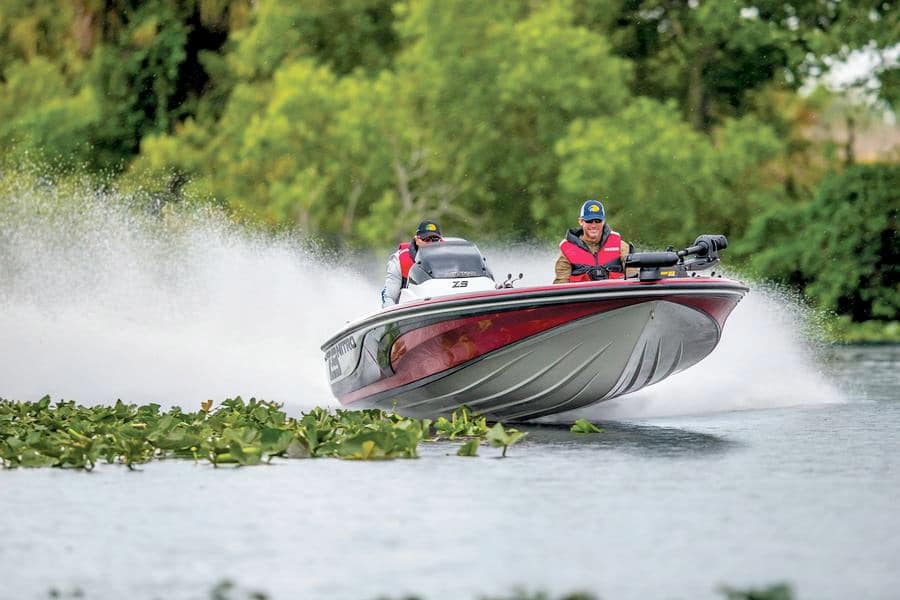
The Hull Truth: Nitro Pad Hulls
Case Study: Nitro’s Pad Hulls
“When the (pad hull) boat climbs up on its pad to plane,” says Tracker Marine product specialist Steve Mason, “you can feel the acceleration. It’s almost like the boat has lost 500 pounds.”
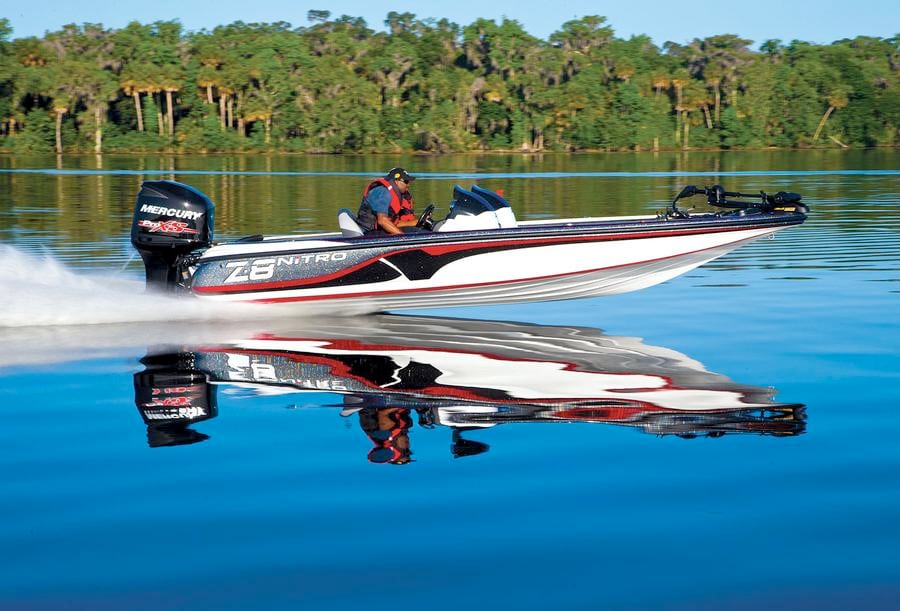
The Hull Truth: Nitro Pad Hulls
A pad is a flattened section of hull, on the keel near the transom. The rest of the hull, the chines and strakes, lift the boat onto the pad, which then rides literally above the chop.
A pad is flatter than the rest of the running surface, by the way, but not often actually flat. “If it’s too flat and you bust a wave,” says Mason, “you’re going to transmit that energy into the boat and into you.” The boatbuilder doesn’t want the former. You don’t want the latter.
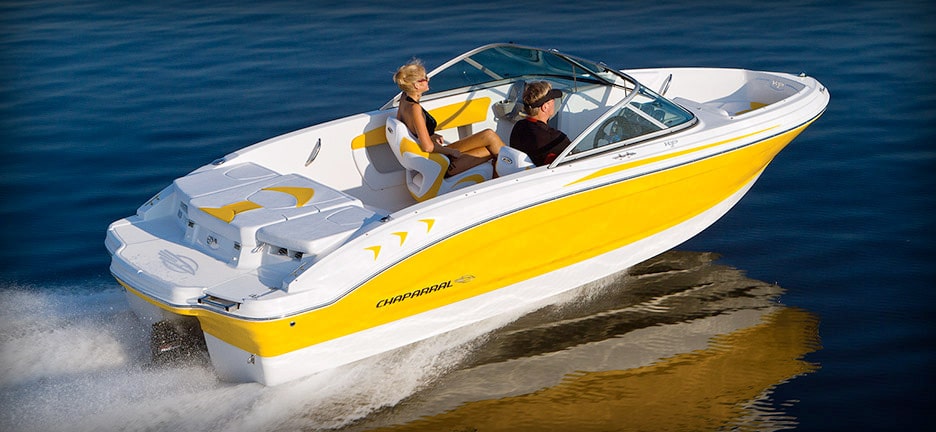
The Hull Truth: Chaparral Extended V-Plane
Case Study: Chaparral’s Extended V-Plane
There are two ways to describe Chaparral’s approach: lengthen the hull to wrap around the outdrive of its I/O boats, or draw the center portion of the transom forward within the hull. Either way, you’re getting full use of your boat’s length. This has less to do with faster top speeds and more to do with the ability to jump onto plane quicker and stay on plane at slower speeds.
You actually put the stern-drive into a pocket. That creates a longer running surface surrounding the outdrive and helping the boat maintain a flatter attitude. It’s like a permanent trim tab. The concept also places the drive and prop farther forward of the swim platform, which has safety advantages.
We’ve found that in this case, and in the others above it, the fancy name gets real results.
Square Idea
Euro is in. Look at most fiberglass boats in this guide and you’ll see soft, sculpted lines in the profiles. This trend has taken shape because of advances in how boats can be cured and pulled from molds in the factories. Used to be anything fiberglass was pretty square out of necessity.
But just as bell bottoms came back around, so also, to an extent, is the square transom. Now considered retro, the flat back has found a new groove thanks to Bayliner’s Explorer series. The design is as practical as a denim jacket because it puts more space in the boat than a rounded transom with a swim platform. That’s probably why it’s most popular in cold-water regions like Maine, the Great Lakes and Seattle, where comfort not only trumps fashion but sometimes becomes fashionable.
9 Terms for Laymen
Planing Hull – A hull designed to ride across the top of the water, rather than plow through it (as does a displacement hull like a pontoon).
Stepped Hull – A hull with a trough that runs from the outer chine all the way to the keel, creating separate forward and aft surfaces. The junction of the two appears as a stair step.
Tri-Hull – A V-hull with two additional outside hulls; also called gull-wing hull. This might be found in a deck boat or catamaran.
V-Hull – A boat with a pointed bow and V-shaped bottom, at least in its forward section, for cutting through the water and softening the ride.
Chine – Where the side of the boat transitions to the bottom of the boat, creating a corner. The sharper the corner, the “harder” the chine and the stronger the bite in turns.
Reverse Chine – A two-corner chine; before the bottom meets the side, it forms an upside-down V-shape to deflect spray away from the boat.
Keel – The centerline, or spine, of a boat. The sharper the keel’s angle (deadrise), the softer the ride — though sometimes at a cost in speed.
Pad – A flat or nearly flat area on the running surface toward the back of the boat.
Strakes – Horizontal or nearly horizontal lengthwise surfaces that help lift the boat onto plane.

